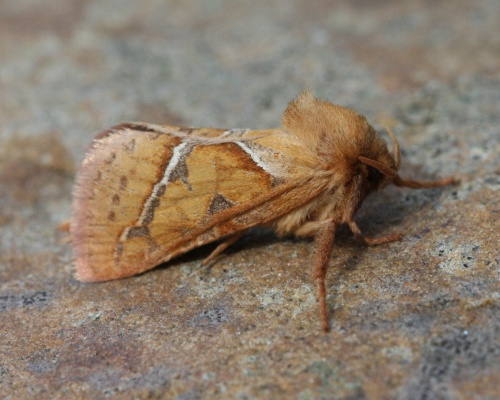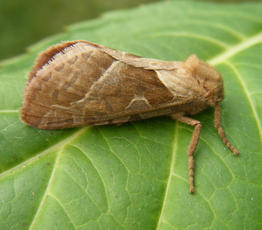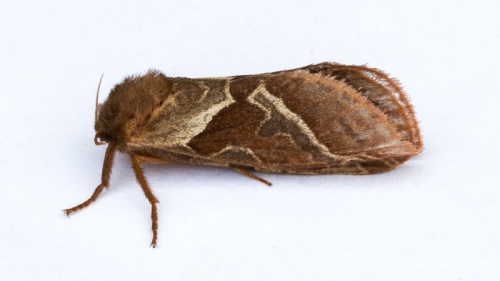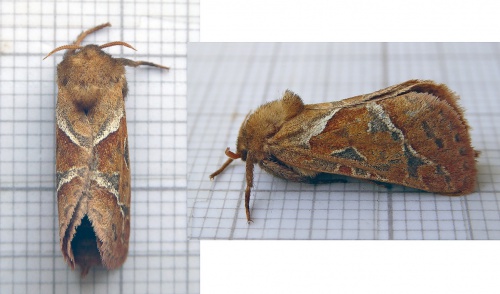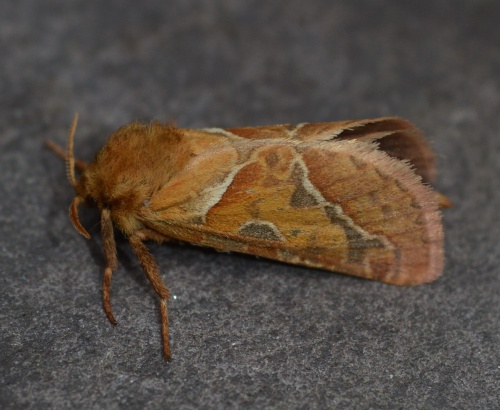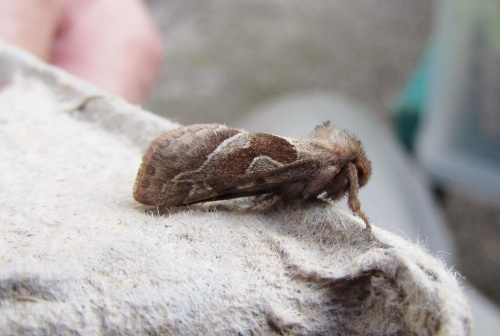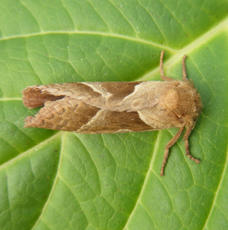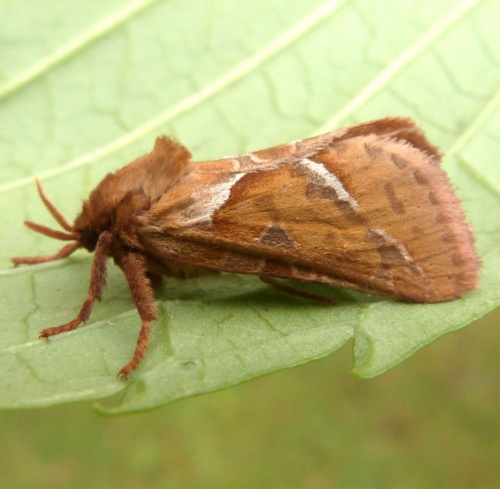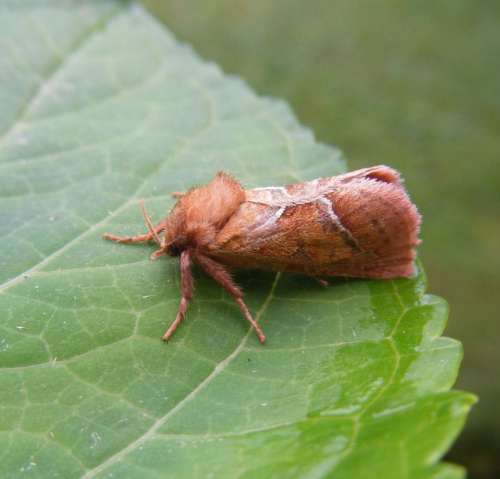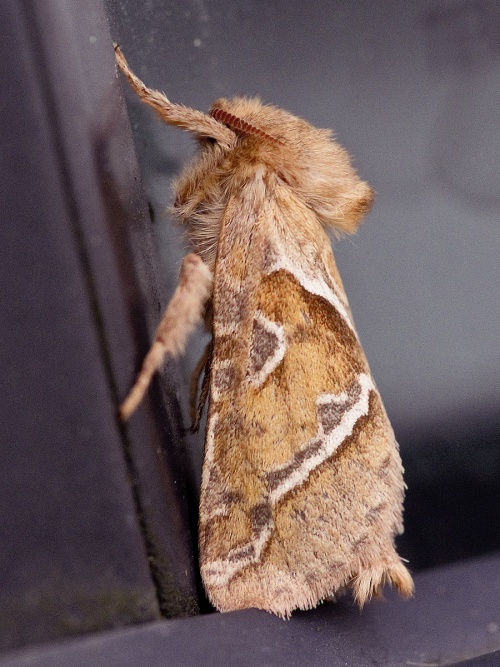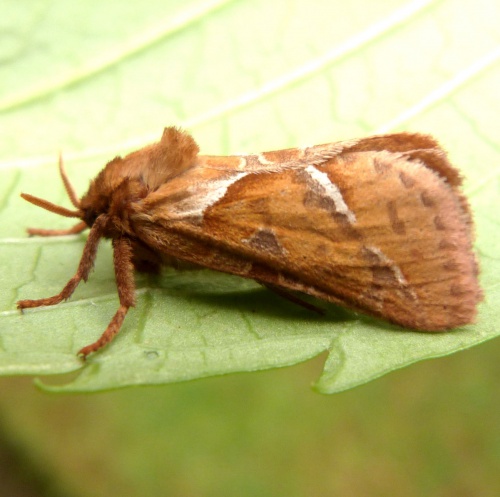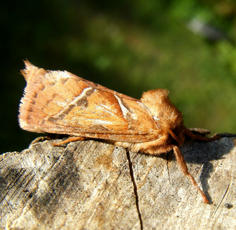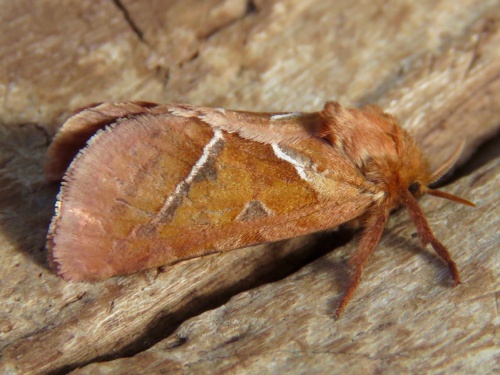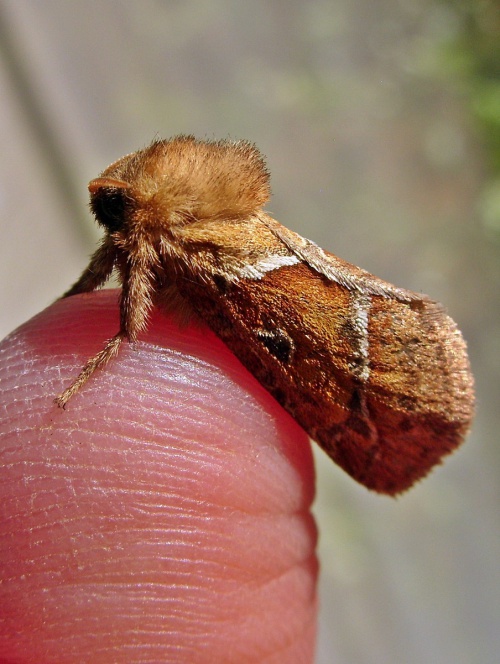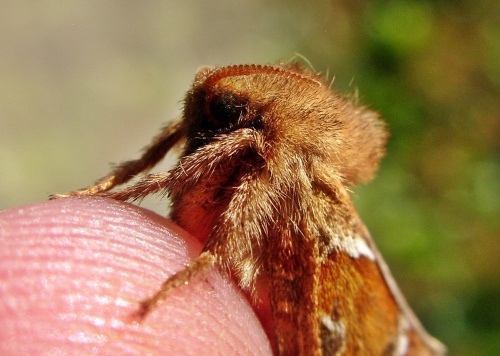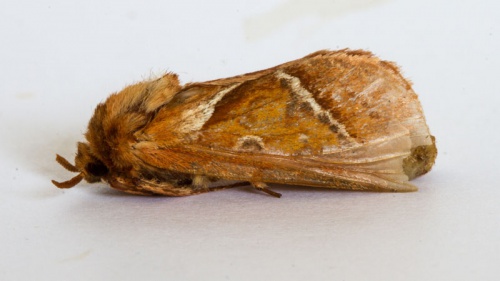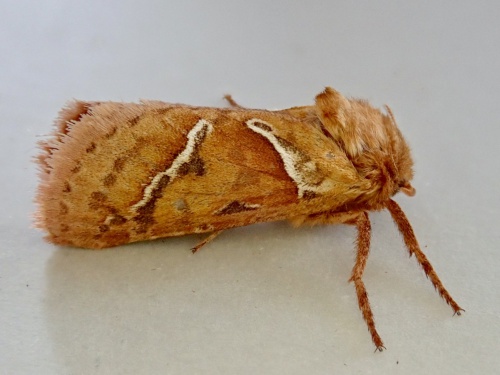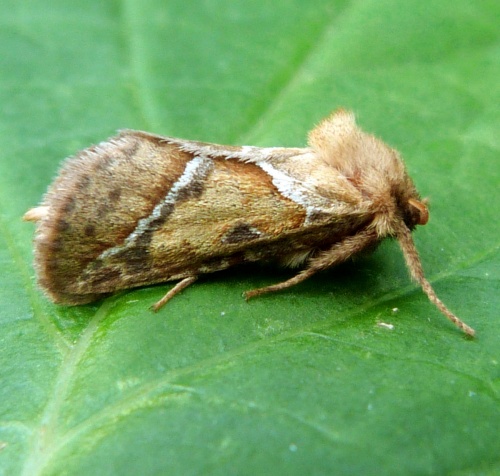Orange Swift - Triodia sylvina
Wingspan 32-48 mm. The moth exhibits marked sexual dimorphism, the males being smaller and more brightly coloured than the females.
This species inhabits gardens, woodland and rough grassland, roadside verges, moorland and other wild places.
Flying later in the year than the other swifts, from July to September.
In common with other members of the genus, the larvae feed on the roots of a variety of plants.
Quite common throughout Britain.
Quite common in Leicestershire and Rutland. L&R Moth Group status = A (common and resident)
Leicestershire & Rutland Map
Enter a town or village to see local records
MAP KEY:
Yellow squares = NBN records (all known data)
Coloured circles = NatureSpot records: 2020+ | 2015-2019 | pre-2015
UK Map
Species profile
- Common names
- Orange Swift
- Species group:
- Moths
- Kingdom:
- Animalia
- Order:
- Lepidoptera
- Family:
- Hepialidae
- Records on NatureSpot:
- 284
- First record:
- 09/08/1951 (Wesley, Isaac)
- Last record:
- 07/09/2023 (Hagley, Neil)
Total records by month
% of records within its species group
10km squares with records
The latest images and records displayed below include those awaiting verification checks so we cannot guarantee that every identification is correct. Once accepted, the record displays a green tick.
In the Latest Records section, click on the header to sort A-Z, and again to sort Z-A. Use the header boxes to filter the list.


